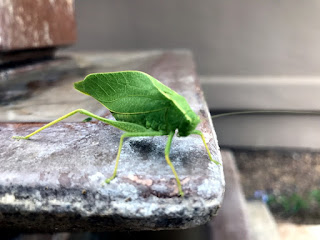No, I mean treats like apples, walnuts, pecans, hickory nuts--and CHESTNUTS.
CHESTNUTS bring back fond memories of my childhood. They also bring back painful memories.
Have you ever harvested CHESTNUTS? Have you had a CHESTNUT tree growing in your yard?
 |
| CHESTNUTS roasting on an open fire |
Cooler weather means CHESTNUTS to me.
You may know what a CHESTNUT is, but do you know how they are harvested? I'll give you the low-down from my memories of childhood.
 |
| CHESTNUTS in a burr |
Walking under a CHESTNUT tree can be hazardous. CHESTNUT burrs are large, needle-spiked balls. If they hit you on the head, it hurts like crazy. Besides, the quills on the burrs feel like a porcupine dropped on your head--sharp end first.
 |
| Picking up CHESTNUTS |
If you're fortunate enough to find a CHESTNUT tree that has dropped its nuts, look for the burrs that have already dried out and changed from bright green to brownish weapon color. Most should have popped open, exposing the CHESTNUTS inside, or dropped them on the ground as they fell. Most pods contain three CHESTNUTS.
Now, to eat your CHESTNUT! Some people warn you not to eat them raw or the tannin in them will cause gastric distress (tummy ache). I don't remember that ever happening to me or my friends. We gathered the CHESTNUTS and opened the tough skin much the same way the squirrels do--we used our teeth. It's a wonder we have any teeth left.
 |
| Roasted CHESTNUT meats |
Some people, who gather more than a few CHESTNUTS, roast or boil their CHESTNUTS before eating them. The recommendation is to score an X into the skin of each nut before cooking. I think that would be much more dangerous to my fingers than the burrs themselves. The reason you should score them is that when they heat up they build up steam inside and will explode (like an egg in your microwave).
Sounds like fun to me.
No matter how you prepare your CHESTNUT, it's worth the effort.
Have you ever harvested CHESTNUTS? Ever been stuck by a CHESTNUT burr? Have a favorite way to eat them?
I'd love to hear your story.














